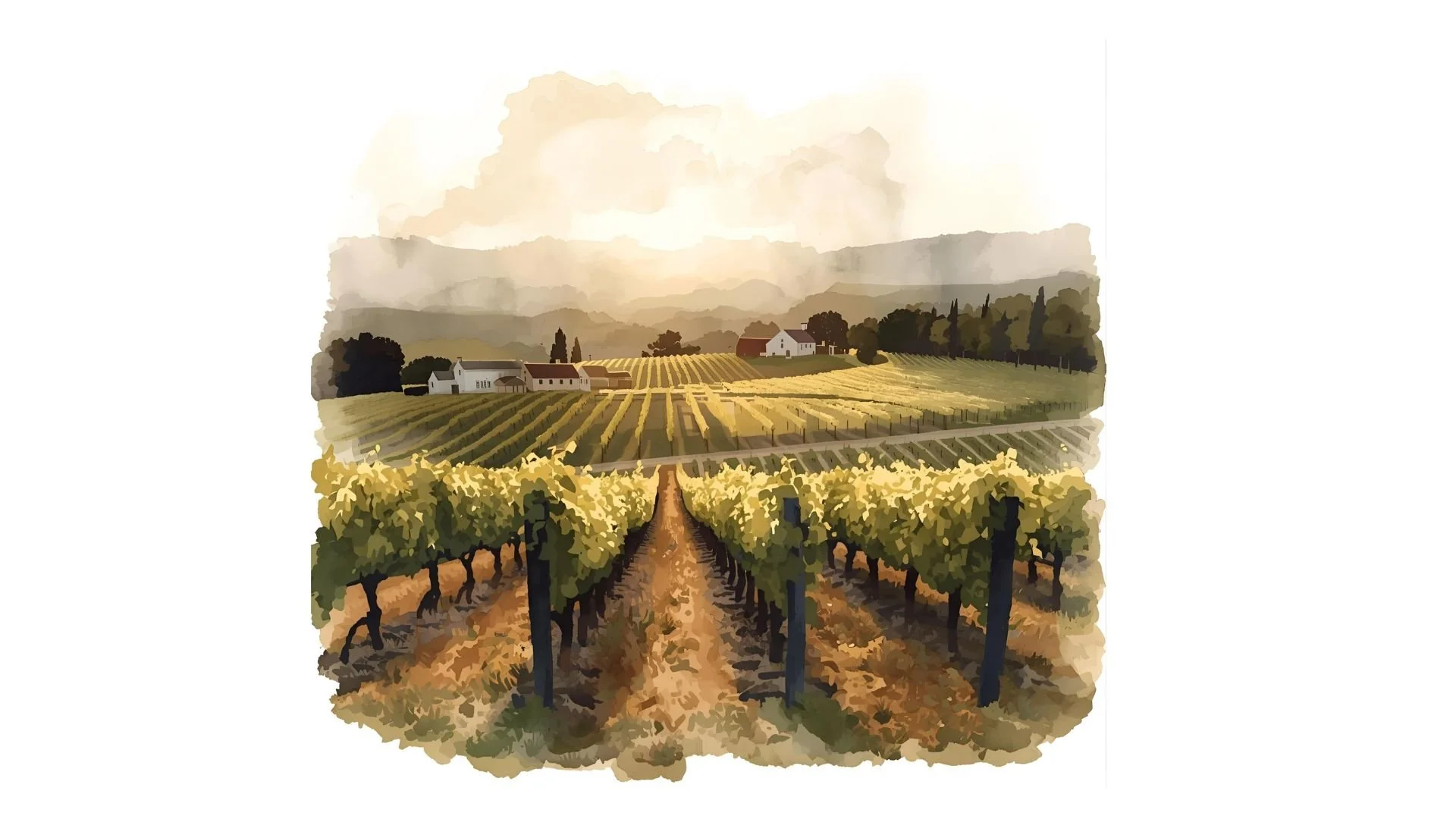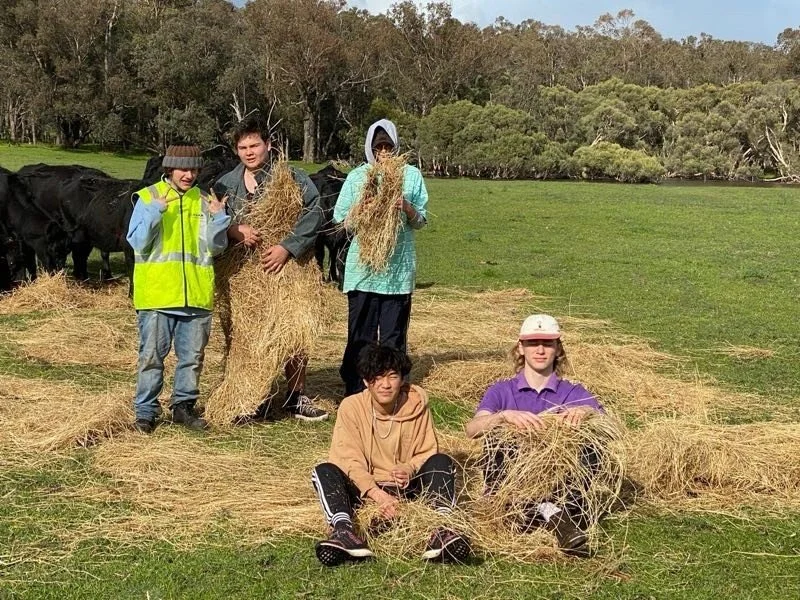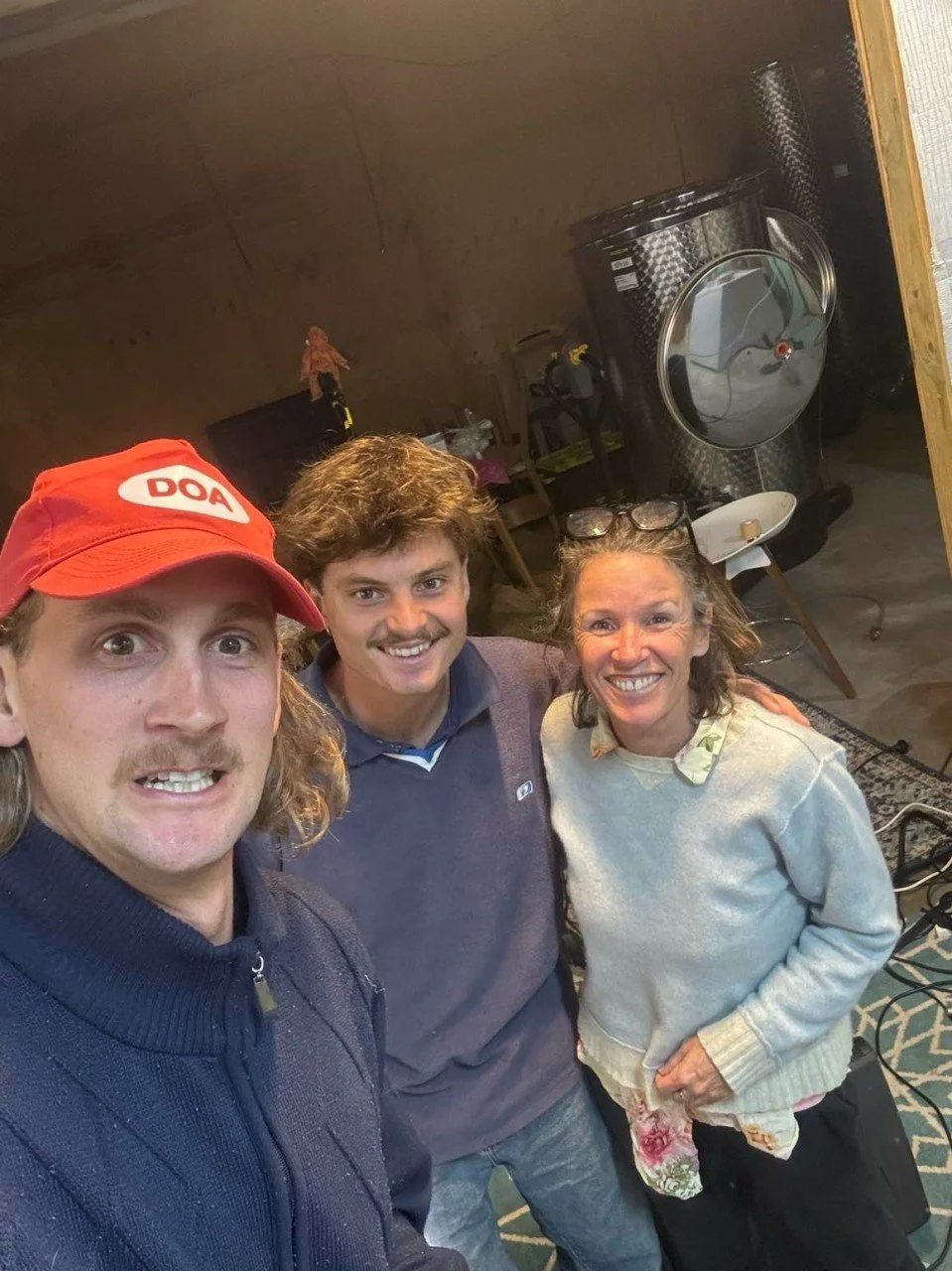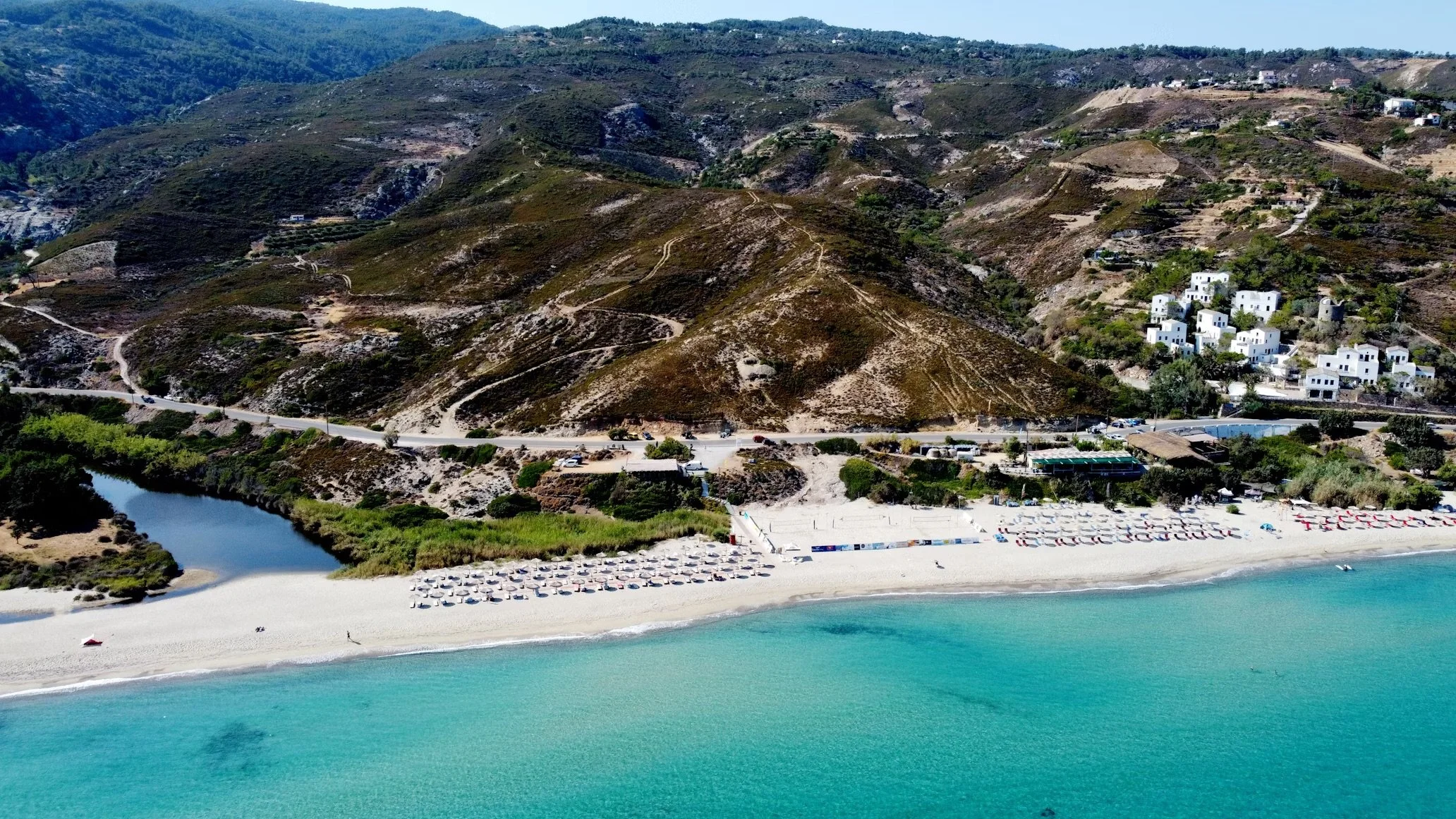Regenerating Education: How one Farmer Bridges Generations Through the Land
Published by The Biophilic Blueprint | Written by Anjelica Smilovitis, Founder
Kellie Harris offers Self-Orientated, Life-Long Learning Experiences on her Noble Bridge Farm in Western Australia.
Across the globe, there are communities that have mastered the art of living well across generations like on the Greek island of Ikaria where many residents live well into their 100s. While each community has its own unique traits, one factor stands out: strong intergenerational connections that nurture culture, stories and ways of life.
These regions are known as Blue Zones, a term coined by National Geographic Explorer and journalist Dan Buettner,, who set out in the early 2000s to understand why certain communities—from Okinawa to Sardinia—consistently produce long, healthy, purpose-filled lives. What he found was not a single diet or habit, but systems of living: shared meals, shared stories, shared work, shared care.
The passing on of culture, stories, recipes, skills—and even myths—has always flowed through generations across the world. These exchanges are rooted in place, in community and in the relationships that form between people of different ages and experiences.
So what happens when those relationships are not actively fostered? When communities become separated, and decisions made at a distance fail to reflect what local people need?
In a small town in Western Australia, regenerative farmer Kellie Harris is creating her own localised Blue Zone of learning, culture and ecological regeneration. Through a 100-year plan, she’s building education that doesn’t just teach skills, but roots young people in the rhythms of the land, the stories of their community and the wisdom of those who came before them.
It’s learning designed to unfold slowly. One young person at a time. One relationship at a time. One season at a time.
Education that looks a century ahead—yet begins in the soil beneath our feet.
Identifying a gap in the Australian education system
The Biophilic Blueprint spoke with Kellie about her approach to reimagining the education through learning models grounded in land-based practice, community involvement and intergenerational connection. She has worked across government, education, transport and logistics, gaining a practical understanding of how systems operate—and where they break down.
Modern schools have their strengths, yet by structuring learning around age cohorts and standardised curricula, they can sometimes dilute the quiet, intergenerational ways that knowledge and values are passed on, she explains. “I realised I couldn’t be part of a system like that, because it was the opposite of biophilic.”
Kellie shared with The Biophilic Blueprint that the shift was personal, too. While supporting a young family member through a difficult period, she began looking more closely at what was happening inside classrooms. Around the same time, she came across research in 2017 showing that roughly 40 per cent of Australian students are disengaged at school each year. And importantly, much of that disengagement is quiet—not disruptive.
Nearly one in four students may look like they’re participating, yet remain emotionally and intellectually detached from what they’re learning.
“By the time they 14, they are disagenged. It’s quite a big fail,” Kellie said.
It was this quiet breakdown in student connection that she could no longer ignore.
“I wasn't alone in that journey and looking for alternative systems for young people to get through school, and a lot is land based learning,” Kellie explains. “Putting all of those things together, I thought to take a decaying vineyard and give it enough love, attention and cooperation to see it renewed.”
In the mission to regenerate the vineyard, Kellie hopes to also renew the learning process for the next generation in her community. At her property in the South West of Western Australia, Noble Bridge Farm, Kellie offers alternative ways of learning in her program called SOLLE—Self-Orientated, Life-Long Learning Experiences.
She works with parents and educators to identify youth interested in land-based education. Her goal is simple but radical: to prepare the next generation to live—and lead—regeneratively.
Through SOLLE, Kellie mentors students who have fallen through the cracks of traditional schooling, helping them discover purpose and connection to place.
Seeds of the Future: A Century of Regeneration
Central to her approach is the idea of a 100-year plan: a long-term, place-based vision that stretches beyond her own lifetime. Instead of aiming for immediate results, it considers how landscapes, ecosystems and communities can thrive over multiple generations.
“This property is a very small vineyard,” she explains. “It was set up as a concept — a successful concept — and then the previous owners moved on. I’m here establishing what I can amongst the vines, and it’s a good community to do it.”
“If we can plan for a century ahead,” she says, “we might just start to see the patterns that make life worth living for young people (who have fallen through the cracks of the system).”
“I’m offering high school services that are land-based,” she explains. “I’m working to identify participants I can support through a traineeship—to help them find purpose and connection to place.”
Some of the core components of the program include intergenerational learning, land-based skills, community connection and the opportunity for students to explore their own interests at their own pace.
A young viticulturalist learns accounting through running a small vineyard project; an artist finds inspiration in the patterns of the vines; a student reconnects to the land through hands-on soil work.
It is “slow work”—and it is meant to be, Kellie says.
Kellie engages with one or two students over nine to 12 months to help identify their purpose and their connection to place, the gaps in their education and what they can take forward with them.
“There's an education philosophy, design theory called Big Picture, where students will get involved in community-based projects,” she explains. “You start with one or two people, one project at a time. That’s how change builds.”
Big Picture Learning (BPL) is an educational philosophy and school model that focuses on personalised, student-centred learning designed to engage students by connecting education to their interests, real-world experiences and future goals. Rather than emphasising one-size-fits-all curricula, BPL prioritizes deep, applied learning and advisory relationships between students and mentors.
Intergenerational Learning and Cultural Continuity
Kellie’s approach draws deeply from her own early years growing up in Gnowangerup, Goreng Noongar Country, on a soldier settlement farm, surrounded by the wisdom of older generations.
“It’s an important place for cultural songlines,” She said. “I learned a lot growing up with my nanna, and from the Indigenous aunties I spent time with,” she reflects. “What I'm doing now is quite influenced by my earliest childhood.”
“But there wasn’t much room in the country for young women, so I went off and did a degree in environmental science. I studied public economics in a research topic when I was 25 and looked at values,” Kellie said.
Exploring the tension between intrinsic values and economically driven decisions, she observed how actions driven primarily by profit could conflict with ethical, cultural or environmental values. Intrinsic values are qualities or principles valued for their own sake, rather than for the practical benefits or outcomes they produce.
Kellies nana and her dog, Patches.
“Back in the 90s, the concept of ‘intrinsic values’ was really new,” she says. “That gave me a perspective on how we value things.”
Kellie noted that competitive pressures on resources can often override the intrinsic values of place, community, culture, land and people.
The next step in her career was in education and following this, spent many years in public transport as a private operator.
“That made me look again contracts and public models and providing public services and valuing them. I saw an overlap—systems designed for good intention, but possibly not being renewed with good intention,” Kellie shared.
This interested led to studying regenerative agriculture to deepen her understanding of how living systems restore balance.
“It was fascinating,” she says. “The science behind regeneration seems to be true whether you’re talking about a land system, an economic system, or a human system.”
“The renerative culture or mindset could be useful in many systems including the fiscal system that drives a lot of decisions and on farm decisions. If we can embrace a regenerative mindset, we can sit back, observe processes and then adapt practices. There’s a lot of room us to work in harmony with the land and the processes that we see in nature.
“With a regenerative mindset, we can repurpose many things and intentionally create reinforcing feedback loops within these systems,” Kellie said. “Even if progress isn’t happening at great speed, a system operating through consistently reinforcing positive feedback loops—beyond just financial measures—can still build resilient communities.”
“I don’t think we’ve quite reached the point where we approach systems a holistic way. But I think that perspective could be taught and observed directly through the land,” Kellie said.
Kellie demonstrates how regenerative thinking can be applied across education—creating systems that evolve and flourish rather than exhaust.
A holistic approach amid the modern system
“In large education systems, students are often grouped strictly by age,” Kellie explains, “but research shows that isn’t always the most effective way to learn. Experiences that connect young people with older generations—even grandparents—can be just as valuable.”
“Equally important,” she adds, “is a sense of place—especially for regional communities.”
Consider the difference between a young person growing up on a farm in regional Western Australia and a student in suburban Perth—their learning, rhythms and sense of responsibility are shaped by entirely different landscapes. The relationship to land, community and daily work naturally informs how young people understand themselves and their roles in the world.
“There is not always a lot of continuity between what's happening on the ground and where intergenerational connections can meet,” Kellie said.
When these connections aren’t reinforced—when learning is removed from place, and community events or seasonal rhythms become something separate from schooling—there is a missed opportunity, Kellie explains.
Local knowledge, shared stories, food traditions and the wisdom of older generations can become peripheral, rather than central, to how young people learn.
“That’s why I've selected this property. It can provide a sense of place to enable intergenerational connections and community connection for young people.
She said once individuals are identified and their purpose, they have the opportunity to work on community projects too.
“My thought from a teaching and learning perspective here is very mentor based,” she said. “I’ve done it with winemakers, with artists. Another project was with a local bus company—Indigenous students designed the logo for the bus.”
Kellie describes it as weaving a web—creating intentional opportunities for people of different ages to come together through storytelling, making and working alongside one another. The feedback from both students and mentors has been deeply rewarding, she said.
“It needs to be done one relationship at a time, one connection at a time, one piece of trust at a time,” Kellie tells The Biophilic Blueprint.
Many residents live well into their 100s on the Greek island of Ikaria.
Blue Zones to illustrate 100 year thinking
Kellie draws on the concept of Blue Zones in addition to her regenerative thinking—communities such as Okinawa, Sardinia, and Ikaria—where people live to 100 and beyond—as living examples of regenerative design in action.
“They are places with some of the highest numbers of centenarians in the world,” Kellie explained. “These communities share certain characteristics that support long life.” Beyond diet, movement and daily habits, key factors include strong intergenerational relationships, a sense of faith or purpose, and deep connection to land.
“Looking at these Blue Zones, you see that time, purpose, intergenerational connection, faith and relationship to land all matter,” Kellie says. “Those markers are quite similar to what characteristics we find in Indigenous communities.”
“It makes you wonder whether our communities and schools are truly nourishing people in the same way.”
She noted that another key characteristic of Blue Zones is that they are often “closed systems.” Sardinia, as an island, is a classic example.
For Kellie, this mirrors her vision of fostering a small, close-knit learning environment, where the community and older generations actively invest in the growth and development of each young person.
At 55, Kellie acknowledges she may not reach 100, but she hopes the regenerative systems she’s building will flourish long after her lifetime.
Why The Biophilic Blueprint aligns with land-based education
The Biophilic Blueprint dives into the ways people, place and design can come together to create communities that thrive—for nature and for us. We love Kellie Harris’s work because it’s hands-on, playful and rooted in real-world regeneration. She doesn’t just reconnect people to the land—she turns the land into a living classroom, using tools like a 100-year plan and lessons from Blue Zones to grow learning, community and ecosystems that last for generations.
Share with us in the comments: What would your ideal “regenerative classroom” look like beyond the school walls?
References and further reading
Buettner, D., & Skemp, S. (2016). Blue Zones: Lessons from the world’s longest lived. American Journal of Lifestyle Medicine, 10(5), 318-321. https://doi.org/10.1177/1559827616637066
Goss, P., Sonnemann, J., & Griffiths, K. (2017, February). Engaging students: Creating classrooms that improve learning(Report No. 2017-01). Grattan Institute. https://grattan.edu.au/wp-content/uploads/2017/02/Engaging-students-creating-classrooms-that-improve-learning.pdf
The evolution of Australian towns: Report 136 – Chapter 6. Bureau of Infrastructure, Transport and Regional Economics. https://www.bitre.gov.au/sites/default/files/report_136_CHAPTER_6_WEB_FA.pdf BITRE
Loewen, P. (2021). Land-based education: Stepping back to save the future. BU Journal of Graduate Studies in Education, 13(1), 32–36. https://files.eric.ed.gov/fulltext/EJ1303975.pdf ERIC
Australian Farm Institute. (n.d.). The family farm is becoming less family. https://www.farminstitute.org.au/the-family-farm-is-becoming-less-family/






